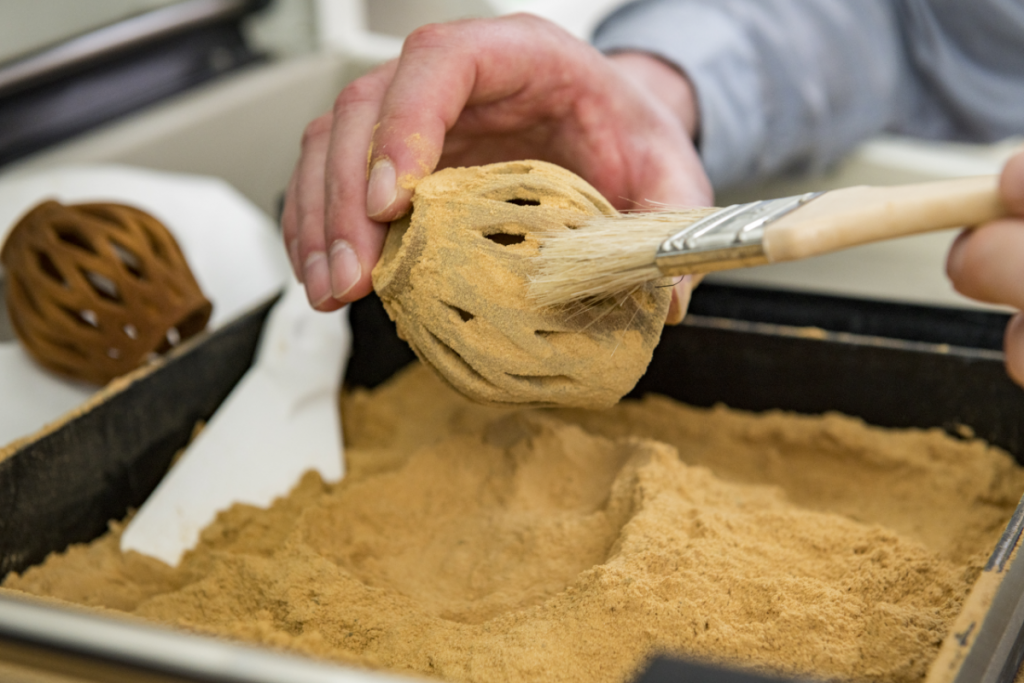
Small and medium-sized companies on site supply renewable raw materials or residues from production to the laboratory for sustainable 3D printing. A short time later, they receive a product made out of it as a workpiece or a valuable item.
This is the vision of the researchers in the recently launched living lab for sustainable additive manufacturing in Saxony. “Our main goal is to enable sustainable and ecological value creation for Saxon industry – 3D printing offers this potential,” says Prof. Henning Zeidler, holder of the Chair of Additive Manufacturing at the TU Bergakademie Freiberg. Together with the Technical Universities in Chemnitz and Dresden, the new living lab wants to implement practical projects. The researchers are thus demonstrating how a circular economy with renewable raw materials as well as local residues from industry and agriculture can be implemented in Saxony by using additive manufacturing. For example, wood chips and dust from sawmills or chaff from harvesting machines could be used.
Making knowledge available digitally
In order to achieve the goal of a comprehensive and sustainable circular economy, the researchers are also building a digital knowledge management platform. There, representatives of small and medium-sized enterprises can find information, network and train themselves. Within the framework of this innovation community, methods of digitization in the living lab are to be demonstrated on the basis of practical projects. Digital decision aids, such as material compositions of each individual product or information on technologies and process chains, are to be made available not only in order to identify potentials of the raw materials and residues in the small and medium-sized Saxon enterprises, but also to assign them to companies within the economic cycle and to network Saxon industry.
Background: About SAMSax
Over the next 1,5 years, the construction of the living lab will be funded by the Free State of Saxony through the innovation hub of the Saxon State Ministry for Regional Development (Simul+) with a total of 1 million euros. The project aims to make the conceptual approach visible and to develop and maintain innovation partnerships. On the basis of practical projects, a prototypical circular economy will be set up as a demonstrator.
Prof. Angelika Bullinger-Hoffmann, Dr. André Dettmann and M.Sc. Adelina Heinz, the Professorship of Labour Science and Innovation Management, Chemnitz University of Technology as well as Prof. André Wagenführ and Dipl.-Ing. Dominik Dürigen, the Professorship of Wood Technology and Fibre Materials Technology, Dresden University of Technology will be researching together in the consortium with the Freiberger Professorship for Additive Manufacturing, Prof. Henning Zeidler, Dr. Lisa Kühnel and M.Sc. Leif Micke.
Contact
Prof. Dr.-Ing. Henning Zeidler
E-Mail: samsax@tu-freiberg.de
Source
TU Bergakademie Freiberg, press release, 2022-09-01.
Supplier
Technische Universität (TU) Dresden
Technische Universität Bergakademie Freiberg
Technische Universität Chemnitz
Share
Renewable Carbon News – Daily Newsletter
Subscribe to our daily email newsletter – the world's leading newsletter on renewable materials and chemicals









